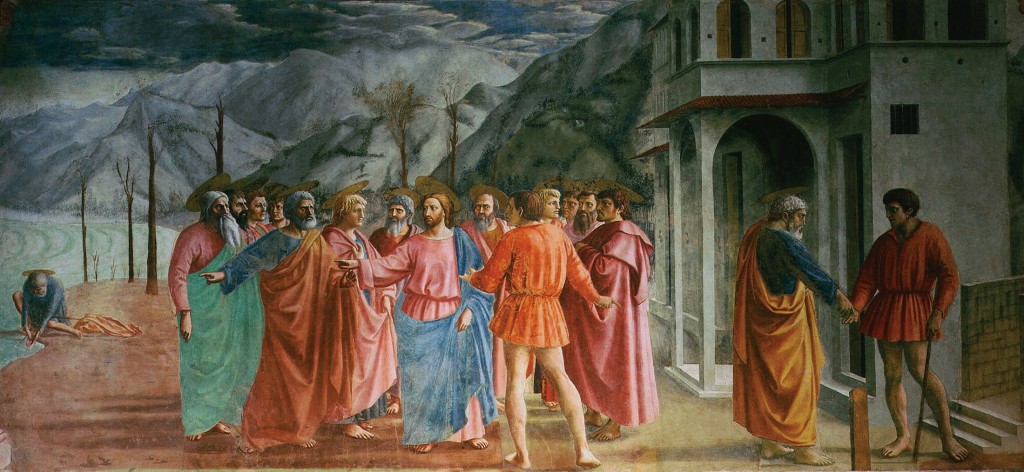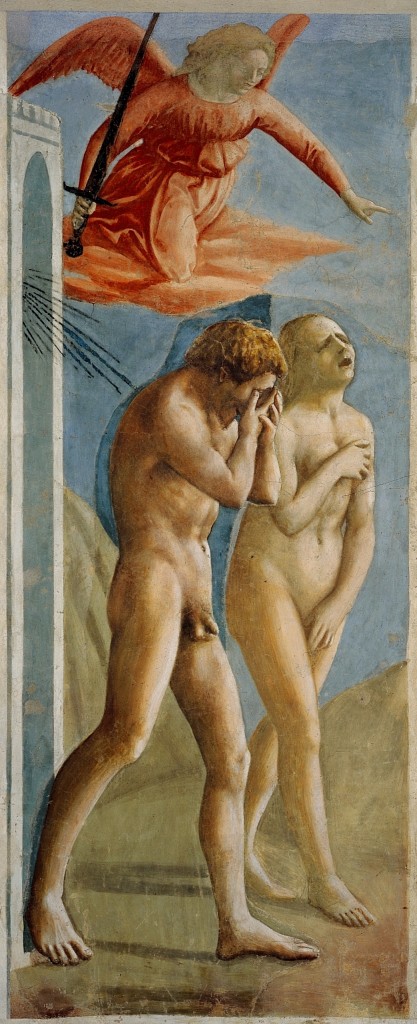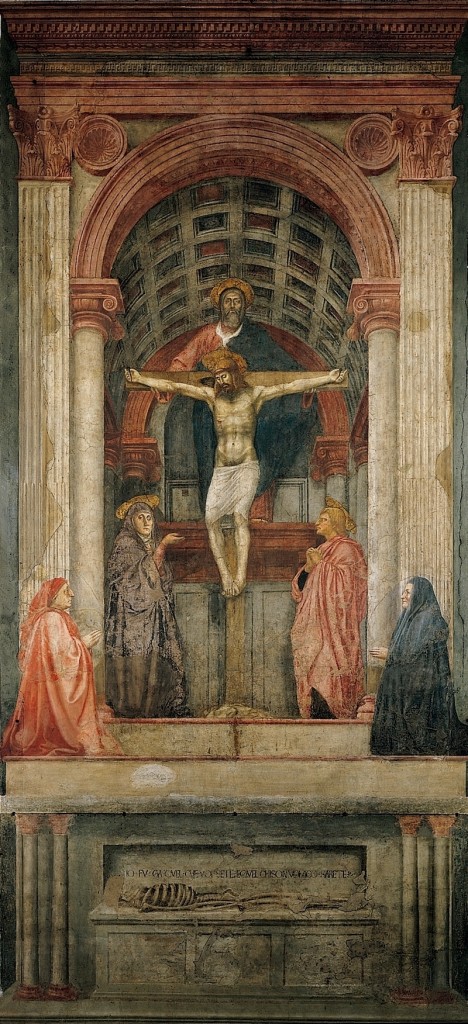I want to talk about the early 15th century, and to help you visualize that time period, it was in 1431 that Joan of Arc was burned at the stake. While Joan of Arc was becoming famous in France, there was a renaissance in art happening in Italy, particularly in Florence.
Most people have never heard of one of the founding fathers of the Italian Renaissance, but DaVinci, Michelangelo and Raphael, all born a generation or two after Masaccio’s death, studied and learned from his work.
Tommaso Cassai, known as Masaccio, was born near Florence in 1401, but there is not much information available about his life. His father died when he was five years old and his family lived in poverty until his mother remarried. There is no evidence that Masaccio ever received any formal art education or even served as an apprentice to another artist. Records show that he joined the painters’ guild as an independent master in 1422.
We know that Masaccio painted frescoes, which is painting on wet plaster, that he was well-known enough locally that he received commissions to paint, and that all of his works are religious subjects. He collaborated with another artist, Masolino da Panicale (1383/4-c. 1436), although the terms and reasons for that collaboration are unclear. Experts say that you can tell, in any painting, which parts were painted by Masaccio and which by Masolino due to their different styles.
Masaccio had contact with and was possibly friends with sculptor Donatello and architect Brunelleschi. What these three artists shared was a new vision and new scientific methods regarding linear perspective and proportion. Masaccio’s paintings were three-dimensional, making them more natural and realistic than the previous gothic two-dimensional flat images. That is what made him famous among contemporary painters and brought later Renaissance painters to study his work. This completely new style of painting is why he’s known as one of the founders of the Renaissance.
But Masaccio died young, probably in 1428, when he was only 26 years old. There is a legend that he was poisoned by a rival painter, but absolutely no evidence to support that theory. It’s possible there are no records simply because, at the time of his death, nobody realized how his style of painting would change the art world, the importance of what he had learned and shared. It’s also interesting to consider how famous he would be today if he had been more celebrated when he was alive, or if the cause of his death truly was murder.
When I read stories like this, I always wonder if at some point some piece of evidence will appear from somebody’s attic to clear up the mystery. Would it make a difference if we knew more? Would Masaccio finally get the recognition he deserves from the general populace? Would we flock to see the Brancacci Chapel as we do the Sistine Chapel? Almost 600 years later, does it matter?



